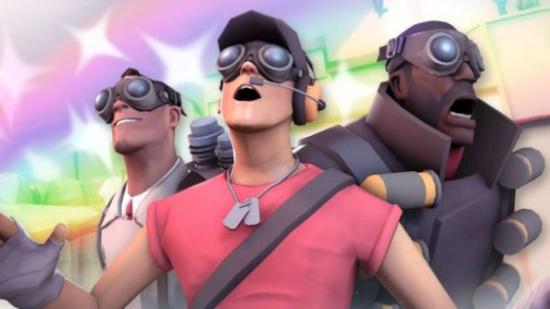Carlos Montero is lead environment artist at Cryptic, the chaps who make Neverwinter. But he also moonlights as project lead of Black Mesa, the Source remake of Half-Life – and it’s likely for that reason he joined a select few at Steam Dev Days for a private tour of Valve’s VR cave.
Much of Montero’s description correlates with the account of a Dev Days guest on Reddit. Invited into a room walled with “QR-code looking symbols”, he donned a headset which tracked all of the codes for positioning.
Where the Oculus Rift offers an experience static from the neck down, Valve’s demo allowed guests to walk around the room and explore the space projected by their goggles. A “special carpet” featured raised areas, which let Montero know when he was leaving the space or reaching the limits of his cable.
“With Oculus Rift, I’ve gotten dizzy within 30 seconds of my first try while standing,” said Montero. “With Valve’s demo I stood and walked around for 30 min without getting dizzy.”
Over the course of a series of demos, Montero had his preconceptions thrown off a cliff. In one, he found himself stood on the edge of a precipice. Despite experience with hot-air balloons and rock-climbing, he felt immediately in danger: “My body wanted to spread out, balance myself.”
Asked to step off his platform and into space, Montero found himself “way more anxious than I should have been”.
“I had to spread my legs out wide and tip-toe my way out into the open air,” he wrote. “Once out there, I was told I was one of few percentage of people who successfully did this without freaking out.
“Standing in mid-air was extremely uncomfortable – my body wanted me to go back,” he went on. “Eventually I went back and felt much better.”
In one demo, Montero was placed at the foot of an “insanely huge” Blade Runner-style skyscraper, for which the “sense of space and perspective was nuts”.
In another, two spheres – one perceptually 100 feet in diameter, the other 30 feet – rotated “effortlessly” around the room in a manner Montero found “disconcerting”.
“It’s hard to describe, but it felt very surreal,” he said. “My conscious mind did not want to accept that what I was seeing was real – my brain was believing that it WAS real.”
A Portal 2 turret assembly demo highlighted one potential drawback of VR that Valve have noticed – normal maps, used commonly in contemporary games to make flat textures appear 3D, don’t work.
“I could look closely at the machine arms and tell the normal maps were fake,” said Montero. “They broke down very badly.”
In later demos of art made specifically for VR, however, Montero noted that the combination of VR with “high-poly geometry” made objects appear immaculately detailed, and was a “bit mind-boggling”.
Mind-boggling is very much what Valve are reaching for. They told Montero they’re wary that, in both hardware and software, it’ll take a very compelling experience to overcome the general public’s “stage fright”.
Valve explicitly told guests that the experience was not designed for consumers – rather, it’s the standard to hold consumer VR to in the next few years though. They also said, though, that they’d built a similar room for Oculus.
The full account reads like the first notes of a continental explorer – filled with import, and so novel as to sound surrealist. What do you lot make of it?
